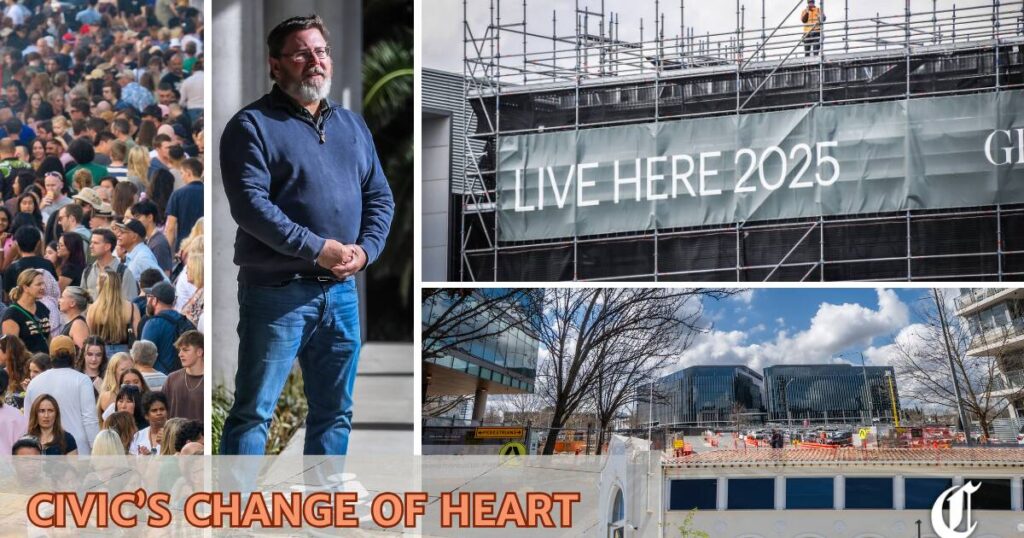
As Canberra braces for a population surge to 800,000 in the next 40 years, the spotlight turns to Civic, poised to become a bustling metropolis. The city center’s population is projected to more than triple by 2040, growing from approximately 6,000 to 22,000 residents. This rapid expansion raises questions about the future landscape of Civic and the broader implications for Canberra’s urban development.
The ACT government’s City Plan, updated in 2023, outlines a vision for Civic’s transformation. The plan anticipates the need for 8,700 new dwellings, predominantly apartments designed for young adults aged 20-34 and older adults over 60. This focus reflects a strategic move to cater to demographic trends, with limited provision for families.
Urban Development and Infrastructure
The transformation of Civic is part of a larger revitalization effort, characterized by a mix of apartments, offices, green spaces, and mixed-use precincts. This development aims to create a vibrant city center, active both day and night. The ongoing infrastructure projects, including the raising of London Circuit and the construction of light rail stage 2A, underscore this “once-in-a-generation transformation.”
Infrastructure Canberra, the ACT’s planning directorate, emphasizes the significance of these changes, which include new walking paths, cycle lanes, and increased parking facilities. Additionally, a new 2,000-seat theatre is set to enhance Civic’s cultural landscape, while Garema Place and City Walk undergo significant upgrades.
Expert Insights and Future Prospects
Professor James Raymer, co-director of the Australian National University’s Population Lab, offers a reassuring perspective on Canberra’s growth. Drawing from his experiences in cities like Shanghai, Raymer believes that Canberra can accommodate significant population increases, provided there is adequate water supply.
“So long as there’s water, cities like Canberra can easily accommodate significant population growth,” said Professor Raymer.
Raymer highlights the benefits of urban density, noting that building upwards is more efficient than expanding outwards. He argues that growth brings economic benefits, such as more jobs and improved city centers, which are crucial for a thriving urban environment.
Challenges and Considerations
Despite the promising outlook, the City Plan’s focus on young and older adults raises concerns about inclusivity. The absence of new schools in Civic suggests a deliberate strategy to concentrate populations without accommodating families. This approach may limit Civic’s appeal to a broader demographic, potentially hindering its long-term vibrancy.
The ACT government acknowledges the steady growth of the City Centre population from a “very low base.” While several schools are located just outside Civic, the lack of educational infrastructure within the city center remains a notable gap.
Implications for Canberra’s Future
As Civic evolves, it reflects a microcosm of Canberra’s broader urban development strategy. The emphasis on creating a livable city center aligns with global trends towards urbanization and population concentration. However, the challenge lies in balancing this growth with the diverse needs of all residents.
Looking ahead, the transformation of Civic offers a glimpse into Canberra’s future. As the city adapts to demographic shifts and urbanization pressures, it must navigate the complexities of growth while ensuring inclusivity and sustainability. The journey towards a vibrant, dynamic Civic is underway, promising a city center that is both a hub of activity and a reflection of Canberra’s evolving identity.







